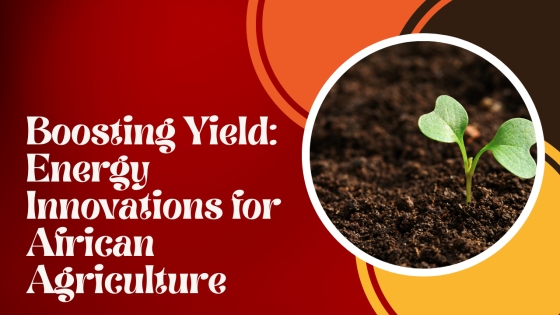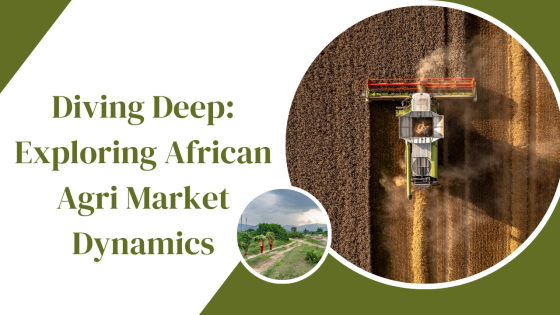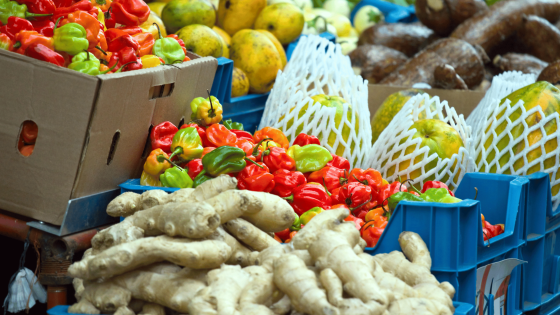
The Impact of Agtech on Food Security in Africa
Agtech has the potential to change the way food is grown closing the African yield gap that has been a problem for a long time on the continent. Food security is an urgent issue, as the global population is expected to reach 9.7 billion by 2050 and Africa’s population to rise to 2.5 billion. By increasing agricultural efficiency, production, and sustainability in Africa, agtech has the potential to significantly contribute to this objective.
The yield gap refers to the discrepancy between what a crop could potentially produce and what farmers actually harvest. Several reasons contribute to this problem, including outdated farming methods and tools, insufficient availability to inputs like seeds and fertilisers, and a lack of mechanisation. Many African farmers still use inefficient, time-tested farming practises and lack the modern-day tools and information that would allow them to boost their crop yields, making Africa a global leader in the yield gap.
Precision farming boosts yield
Precision farming is one of the most exciting new developments in agricultural technology in Africa. The use of data analytics and GIS technology in precision agriculture allows for greater yields and better quality crops. Farmers can use this method to learn about their crops’ unique requirements and adjust the amounts of water, fertiliser, and pesticides they use accordingly. Farmers can benefit from precision agriculture in a number of ways, including its ability to boost yields while decreasing their resource usage and negative effects on the environment.
Plants that are resistant to pests and diseases, as well as those that can withstand drought and other environmental challenges, can be developed utilising biotechnology, another promising technique. Bt cotton, resistant to the bollworm, a serious pest in Africa, was developed using biotechnology and is now widely grown. Biotechnology can aid African farmers in increasing yields and decreasing losses by creating crops that are more resilient and resistant to pests and illnesses.
One of the most crucial ways in which agtech may reduce the yield gap is through increased mechanisation. Traditional hand tools and labor-intensive methods are still widely used by African farmers. Mechanized equipment like tractors and harvesters are made more accessible through agtech, allowing farmers to enhance output while decreasing inputs. In turn, this can make farming more appealing to young people, who are typically attracted to urban regions in quest of greater economic prospects.
Agtech enables sustainable agricultural techniques
Aquaponics is another agtech concept that is gaining traction in the African market. When fish farming (aquaculture) and hydroponics (growing plants in water) are combined, the result is a new type of farming called aquaponics (the farming of plants without soil). To grow plants in an aquaponics system, fish waste is utilised as a fertiliser, and the plants filter the water the fish swim in. It is a closed-loop system that can efficiently produce large quantities of fish and vegetables. The reusability of the system’s water and its ability to reduce water waste make aquaponics an attractive option in regions where water is scarce or of low quality.
In addition to bolstering efficiency and production, agtech has the potential to significantly enhance the long-term viability of Africa’s agricultural sector. Soil erosion, water pollution, and other environmental issues are possible consequences of the monoculture farming method and the widespread use of synthetic fertilisers and pesticides that is common among many African farmers. Crop rotation, intercropping, and organic farming are just a few examples of the sustainable agricultural techniques that agtech may help spread. Farmers can boost soil health, decrease their reliance on synthetic inputs, and lessen their environmental footprint by adopting these methods.
The issue of food waste is particularly pressing in Africa, and agtech has the potential to help. Up to one-third of Africa’s annual food production is lost or squandered, according to the Food and Agricultural Organization (FAO). This occurs because of a number of issues, including a lack of suitable infrastructure, storage space, and supply chains. Improving post-harvest management and decreasing losses during transportation and storage are two ways in which agtech might assist in resolving these problems. Farmers, for instance, can benefit from real-time data on market prices and demand provided by mobile applications and other digital technology, which can increase crop sales and decrease spoilage.
Information sharing is key to closing the African yield gap
For the agtech ecosystem to thrive, its various participants must work together and share information more effectively. Farmers, scientists, lawmakers, and businesses all fall under this category. Stakeholders can pool their resources and create more efficient solutions that are more suited to their needs and the environments in which they operate by working together and sharing knowledge. Sharing information and working together can also help farmers better integrate new technologies into their methods, resulting in more sustainable and resilient agricultural systems. As stakeholders work together to solve the issues of climate change, resource scarcity, and food insecurity, the need for collaboration and knowledge exchange is greater than ever.





















